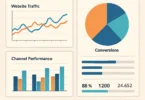Facing a student loan repayment plan denial can be frustrating, especially if you were counting on lower monthly payments or working toward forgiveness programs like PSLF. In 2025, many borrowers in the United States are encountering application denials due to policy changes, system backlogs, or documentation errors. Understanding the causes of these denials and knowing how to address them is essential for securing an affordable payment plan.
This article explores the primary reasons for repayment plan denials, clarifies the differences between federal and private loans, and provides actionable strategies to overcome these obstacles.
Understanding Student Loan Repayment Plans
Student loan repayment plans determine how much you pay each month and how quickly you can pay off your debt. With several repayment options available, especially for federal loans, borrowers can tailor their plans based on income, career goals, or forgiveness eligibility.
Federal Student Loans vs. Private Loans
Federal student loans are backed by the U.S. Department of Education, offering benefits such as income-driven repayment (IDR) plans, loan forgiveness, deferment, and forbearance options. On the other hand, private loans—issued by banks or other private lenders—typically have stricter repayment terms and limited relief options.
One of the primary reasons for student loan repayment plan denial is confusion between federal and private loans. For example, private loans don’t qualify for federal IDR plans or forgiveness programs.
Overview of Income-Driven Repayment Plans
Income-driven repayment (IDR) plans are designed to adjust your monthly payments based on your income and family size. Plans such as IBR (Income-Based Repayment), PAYE (Pay As You Earn), and ICR (Income-Contingent Repayment) are widely used for federal loans.
IDR plans not only help reduce financial stress but also count toward loan forgiveness after 20–25 years of qualifying payments. However, incomplete documentation or misreporting income can lead to a student loan repayment plan denial, even if you’re eligible.
Top Reasons for Repayment Plan Denials
Understanding why denials occur can help you avoid costly mistakes. Below are the five most common reasons for repayment plan denials.
Incomplete or Incorrect Documentation
Missing signatures, outdated forms, or incomplete income proof are common reasons for denial. Loan servicers need accurate documentation, such as recent tax returns or pay stubs, to verify your eligibility for IDR plans.
Tip: Always review the checklist provided by your loan servicer to ensure all documents are correctly filled out before submission.
Failure to Demonstrate Financial Hardship
Some repayment plans, like IBR and PAYE, require borrowers to demonstrate a partial financial hardship—meaning their standard monthly payment exceeds what they would pay under an IDR plan. If you fail to prove this hardship, your application may be denied.
Ineligibility for Loan Forgiveness Programs
Not all federal loans are eligible for forgiveness or IDR plans. For instance, Parent PLUS Loans are ineligible for most IDR plans unless they are consolidated into a Direct Loan. Similarly, private loans cannot access federal forgiveness programs.
Inaccurate Income Reporting
Errors in reporting income—such as failing to include your spouse’s earnings when required—can lead to an automatic denial. Additionally, if your reported income doesn’t match IRS data, your application could be rejected.
Defaulted Loans and Their Implications
Borrowers with defaulted loans are typically ineligible for repayment plans until they rehabilitate or consolidate their loans. Defaulting not only leads to denials but can also trigger wage garnishment and negative credit reporting.
Strategies to Overcome Denial
The good news is that most denials are fixable. Below are effective strategies to help you reapply successfully.
Double-Checking Documentation Before Submission
Ensure all forms are complete, signed, and accompanied by required documents like tax returns or income statements. Submitting accurate, up-to-date information reduces the chances of errors.
Understanding Income Requirements and Guidelines
Each IDR plan has specific income eligibility requirements. Use the U.S. Department of Education’s Loan Simulator tool to determine the best plan for your income and avoid misapplication.
Utilizing Loan Forgiveness Programs Wisely
If your current loan type doesn’t qualify for forgiveness or IDR, consider consolidating your loans into a Direct Loan. This step often unlocks eligibility for forgiveness programs like PSLF.
Seeking Financial Counseling
Sometimes, professional guidance is needed. Nonprofit credit counselors or student loan experts can review your loan portfolio, explain your options, and help you appeal denials effectively.
Conclusion
A student loan repayment plan denial doesn’t have to be the end of your journey toward affordable payments. Most denials result from fixable issues like incomplete documentation or misunderstandings about eligibility requirements. By carefully preparing your application, understanding your loan type, and seeking professional guidance, you can improve your chances of approval.
Also Read






